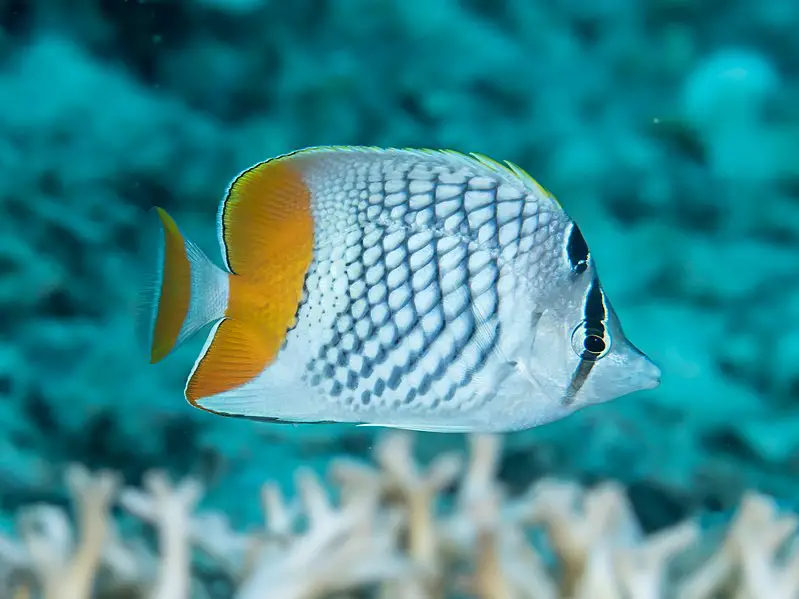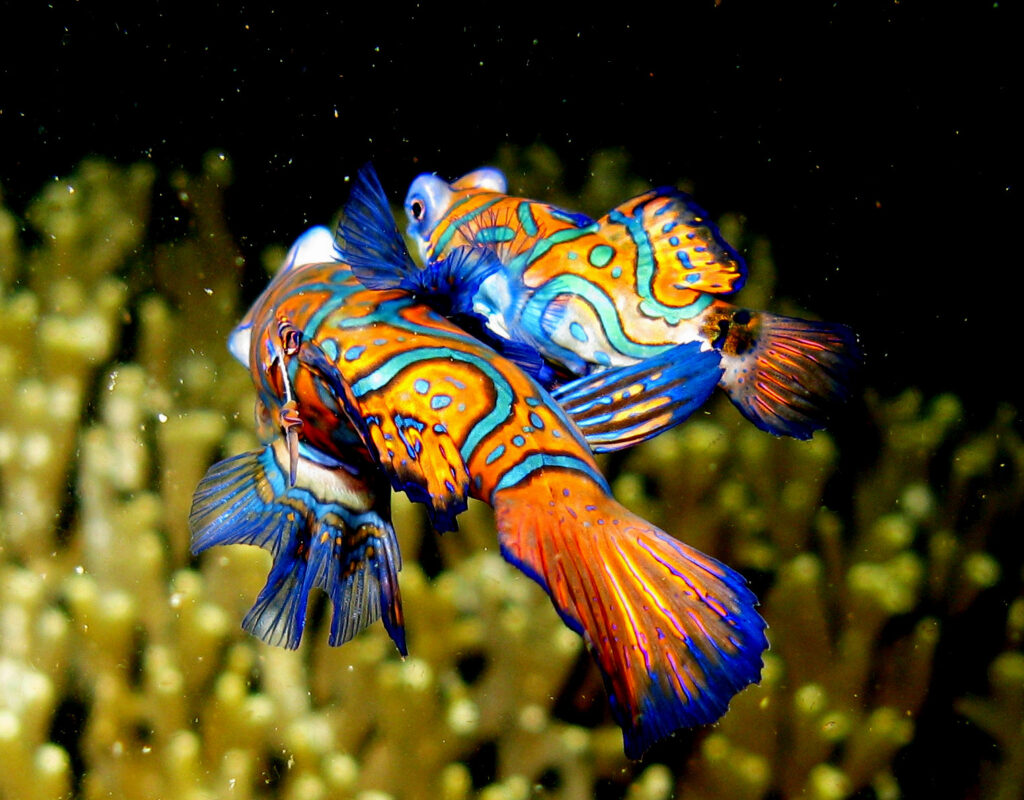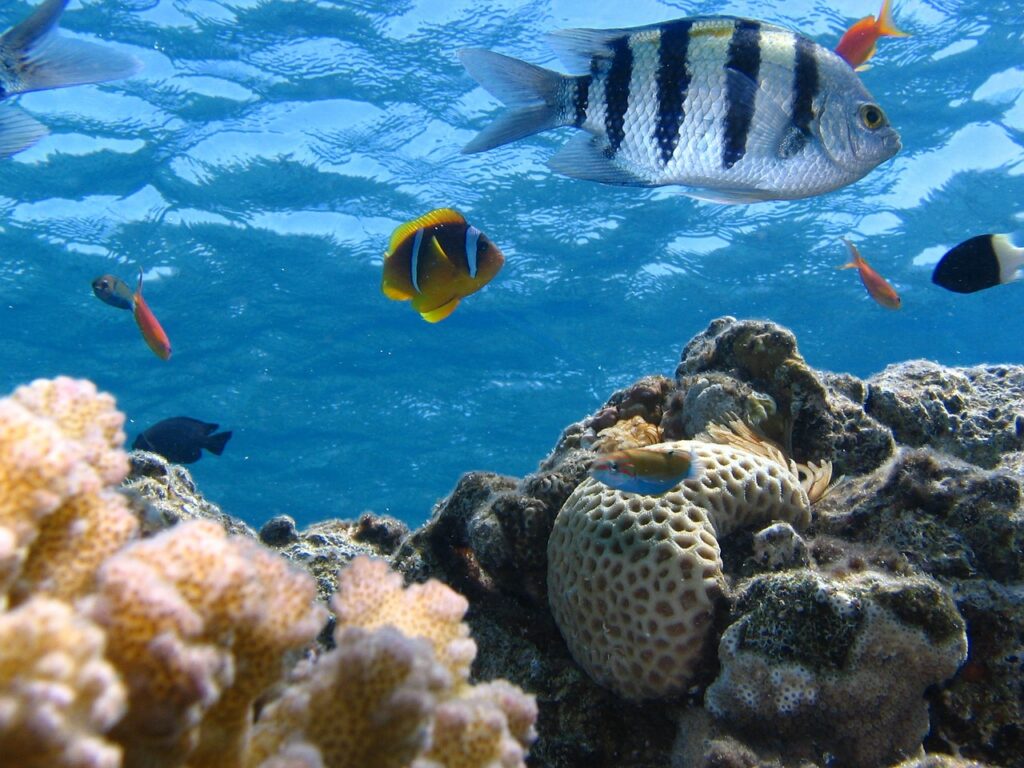Pearlscale Butterflyfish are particularly beautiful fish that many hobbyists consider keeping. They have stunning bodies and look amazing in a lit aquarium, adding bright hues and bold graphics to the display.
Pearlscale Butterflyfish need large tanks filled with peaceful species, and should not be kept in less than 70 gallons. These fish are popular because of their amazing appearance, but if you are going to keep one, you need to understand how to look after it and what kind of environment it needs, because these fish are not safe in a reef aquarium.
Are There Any Reef Safe Butterflyfish?
If you are thinking of getting butterflyfish for a reef aquarium, you might be wondering whether this is possible, or if you have to choose other species – because many kinds of butterflyfish are not suitable for reefs and cannot be added to any aquarium with coral.
This includes Pearlscale Butterflyfish; although some people do keep these in reef tanks, it’s important to be aware that they are not considered reef safe and they should not be sold to you as suitable for reef tanks. You may get lucky and have success with one in a reef aquarium, but this isn’t common and you shouldn’t aim for this setup.
However, there are some kinds of butterflyfish that are a little safer to add to a reef aquarium. If you really want a butterflyfish in your reef tank, you will have to choose between a few species that are suitable.
These include:
- The Tahiti Butterflyfish: this is a 5 inch long species that is native to the eastern Pacific Ocean, although it has quite a limited range there. It’s a good fish for beginners because it will sometimes eat flakes, and it tends to be quite hardy. You may want to add a trio of fish initially, but the third should be removed when the other two pair up to avoid problems.
- The Vagabond Butterflyfish: this fish is larger and can reach around 9 inches, so you might need more space for it, especially if you keep several. It is usually happy in captivity and can be kept in pairs, removing the need to deal with a third fish. It’s native to the Indo-Pacific Ocean and is an omnivorous species that will prey on worms, crustaceans, coral polyps, and more.
- The Spotted Butterflyfish: this fish will again reach around 5 inches long, and it can be kept with both soft corals and hard corals. However, it will sometimes feed on coral polyps, which can make it difficult to keep in some reef tanks, so you will need to watch it and make sure it isn’t causing too much damage. It is also rather tricky to keep because it needs to be fed several times a day, and it isn’t commonly found in the aquarium trade.
- The Schooling Bannerfish: this fish is reasonably safe to keep in a reef aquarium, although – like all butterflyfish – it may pick at the coral and do some damage at times. Unfortunately, it is very easy to mix these fish up with the Reef Bannerfish, which is not safe to keep in aquariums, and telling them apart can be challenging even for experienced hobbyists in some cases.
You should be aware that any butterflyfish could damage your reef aquarium, and this is a risk that you will have to deal with if you want to have butterflyfish in your reef aquarium.
If they do a lot of damage to your tank, you may need to change your setup and remove the fish before they kill the whole reef. Although the fish listed above are considered the lowest risk, they may still attack the corals.
Do Pearlscale Butterflyfish Eat Coral?
Unfortunately, Pearlscale Butterflyfish will often eat coral polyps, and this is the main reason that most people choose not to keep them in reef tanks. Although you may be successful in doing so, there is a risk that the fish will start attacking the reef, and may ruin your setup. You should be aware of this before you add these fish to your aquarium.
Many people keep Pearlscale Butterflyfish in fish-only tanks or in tanks with live rocks but no corals. If you do want to keep one of these fish in a reef tank, it may be better to put it in with soft corals, and avoid stony corals. This is because many soft corals are noxious, so you might find that your butterflyfish is less likely to eat them.
What Do Pearlscale Butterflyfish Eat?
Pearlscale Butterflyfish are omnivorous and will generally eat quite a wide range of foods. You can feed them things like blackworms, marine flakes, brine shrimps, pellets, and more. You might also find that they enjoy things like minced mussels, clams, squid, Mysis shrimps, and more. Some Butterflyfish are picky, but most are good eaters.
You may also find that your butterflyfish is hard to feed if it is keen to eat the coral and this isn’t an option in your tank, so be aware of this before you get the fish.
If your fish does not eat, make sure you walk away from the tank after feeding, in case your presence is alarming the fish and deterring it from getting its share of the food.
You should also make sure that the fish isn’t being harassed by other tank inhabitants, as this can put them off their food. As long as the tank parameters are good, the other fish are suitable companions, and you give your Pearlscale Butterflyfish sufficient amounts of meaty foods, flakes, and more, it should eat well.
Conclusion
A Pearlscale Butterflyfish is undoubtedly a beautiful addition to pretty much any tank setup, but it is not suitable for reef tanks, and should not be sold to you as suitable. It will eat coral polyps and may do major damage to the tank, so only add one to a reef aquarium if you are prepared to take this risk.



